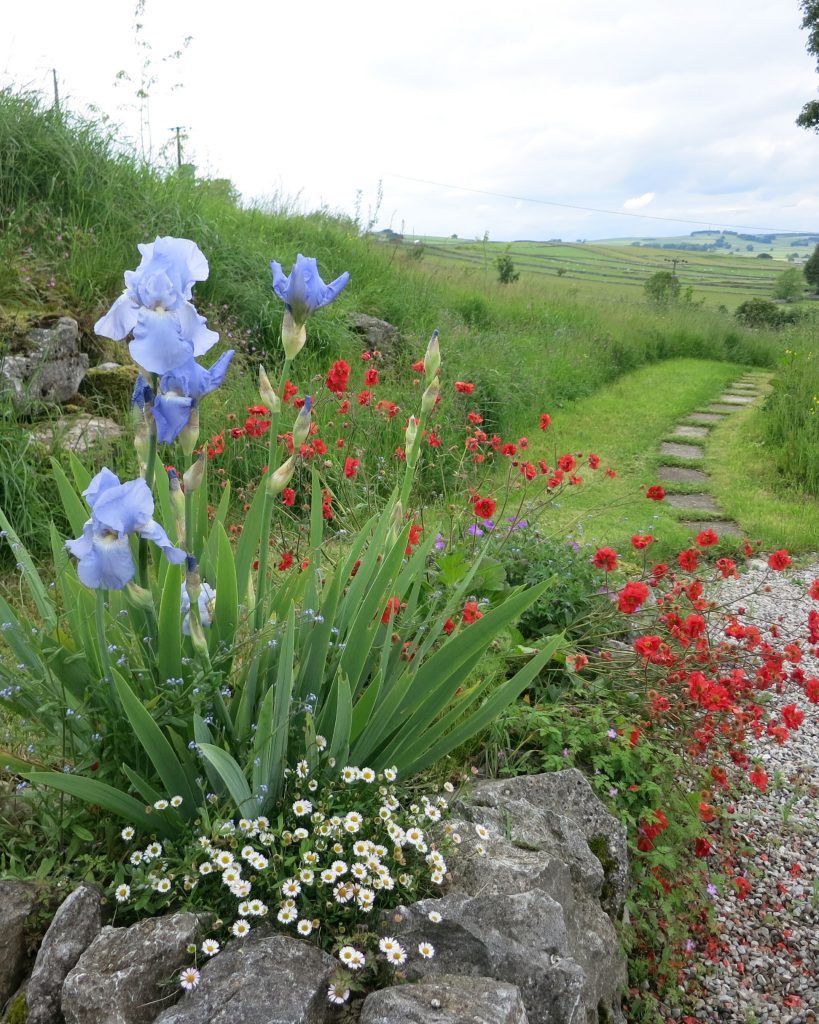
Having rented the field for several years, in order to ensure clear access to the magnificent view of surrounding Derbyshire countryside, we were contacted by the landowners, informing us they wished to sell. It might seem an extravagant whim but we both felt that, after working so hard for so many years, we deserved to be able to invest our savings in something that would bring us enjoyment for the rest of our days…. so we bought the field.
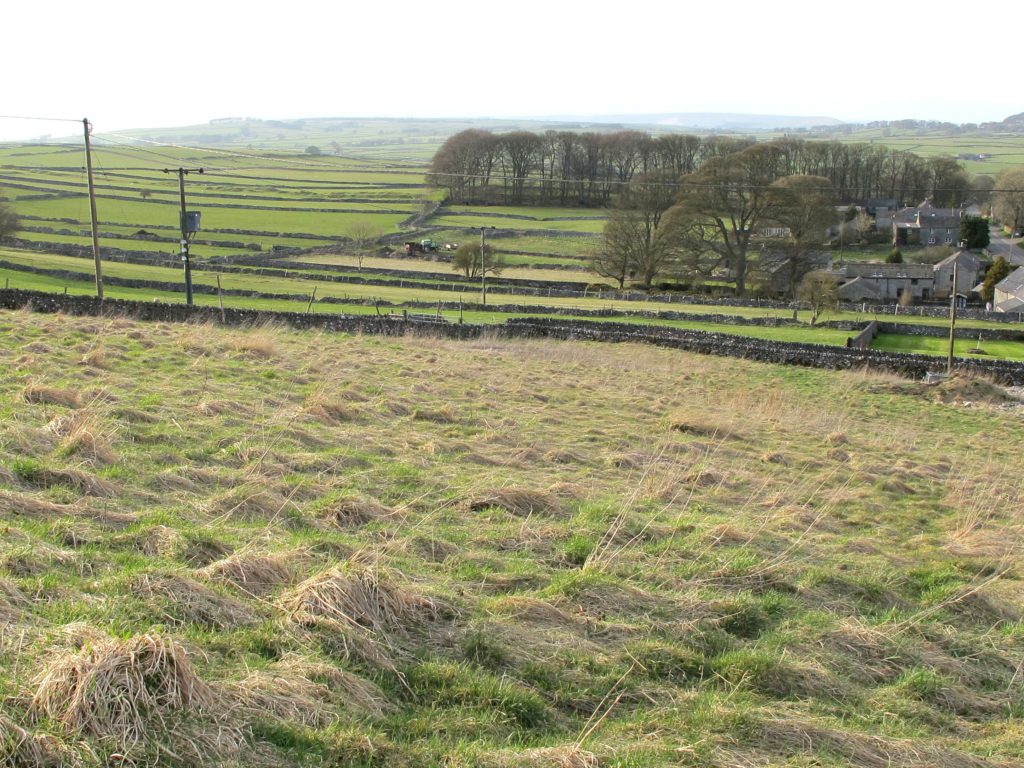
The field, approximately 3/4 acre, had been used for the rearing of young beef cattle, but had been left unused for at least six years and was very overgrown and uneven.
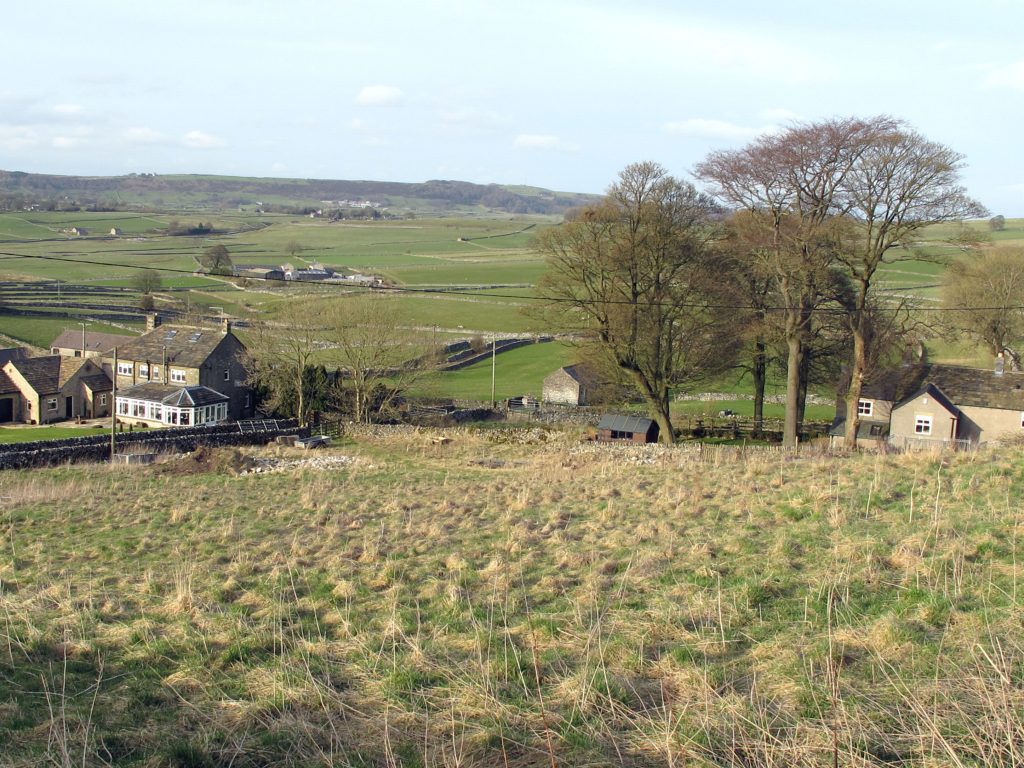
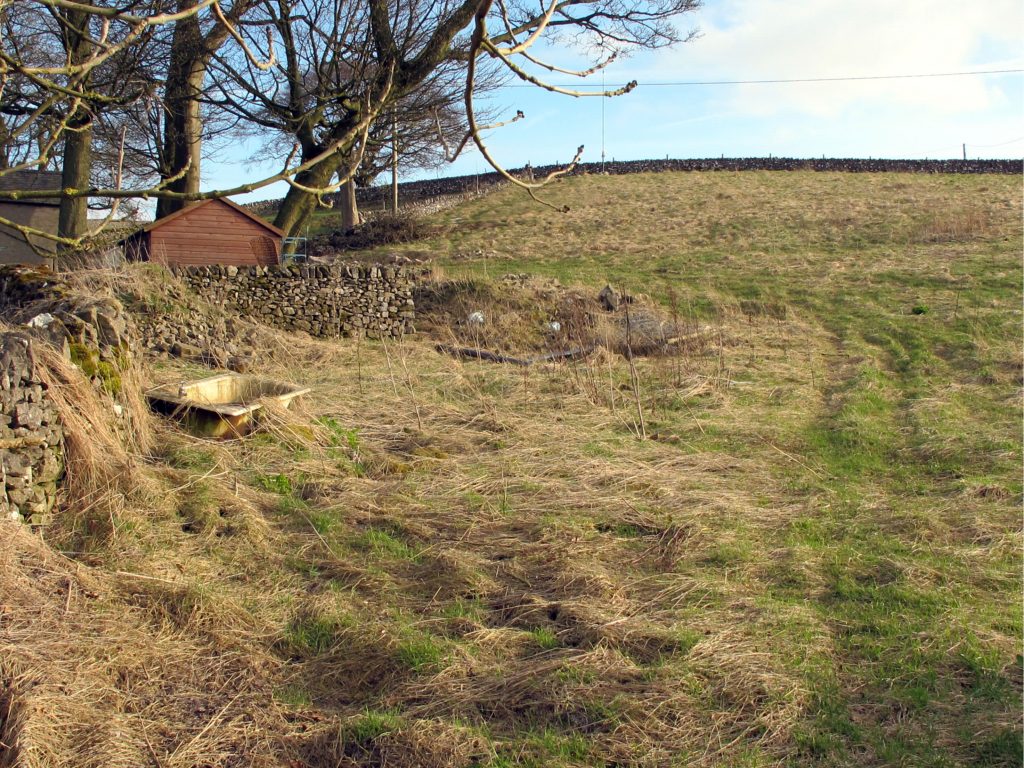
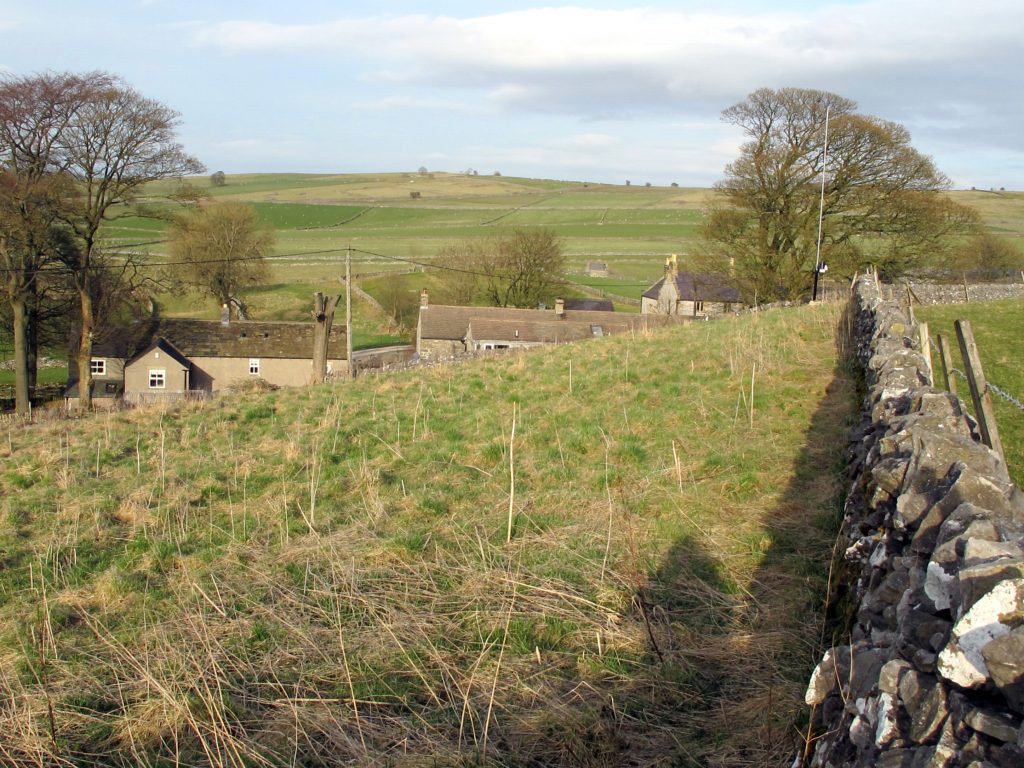
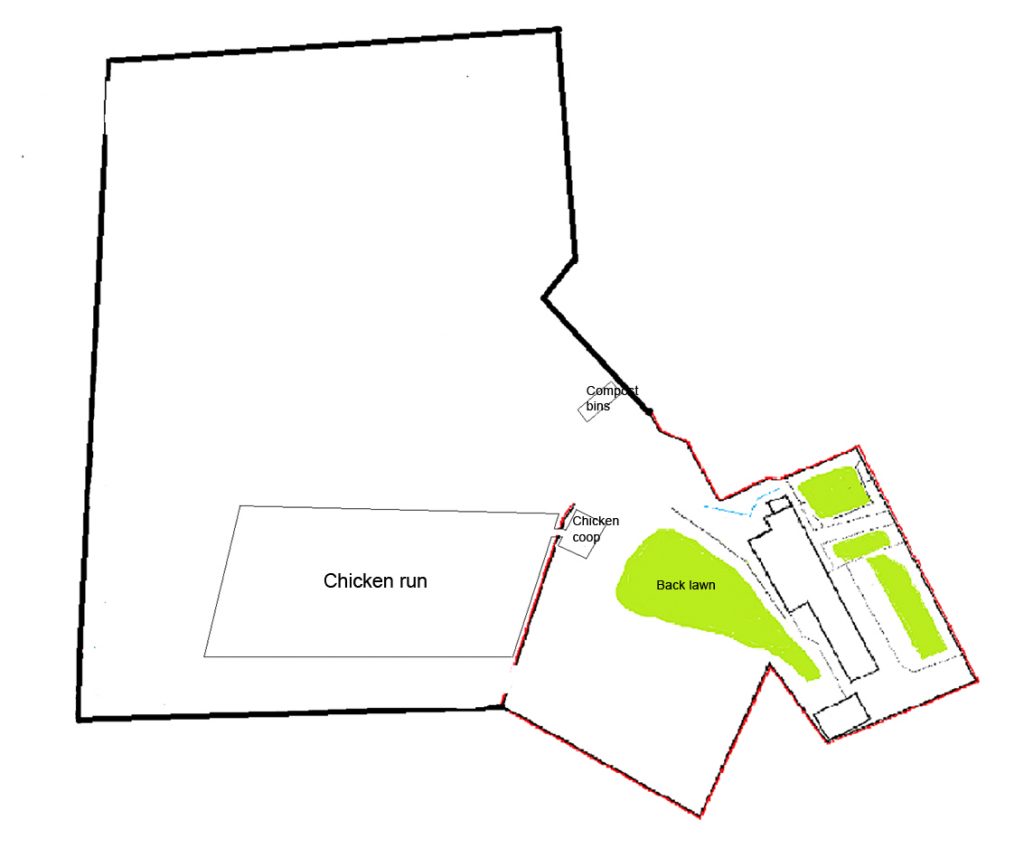
In elevation, the boundary wall at the bottom of the image is actually the highest part of the land.
Native hedgerow trees have now been planted along part of this highest wall and the wall to the left, to create a shelter belt for the chicken run and for the fruit trees planted in the lower part of the field
Chickens
Strange, how two people can live together for over thirty years without discovering they share a common hankering to keep chickens, a fact only to be revealed by a chance conversation. So no problem puzzling over what to get me for my next birthday; a lovely little mixed flock of chickens
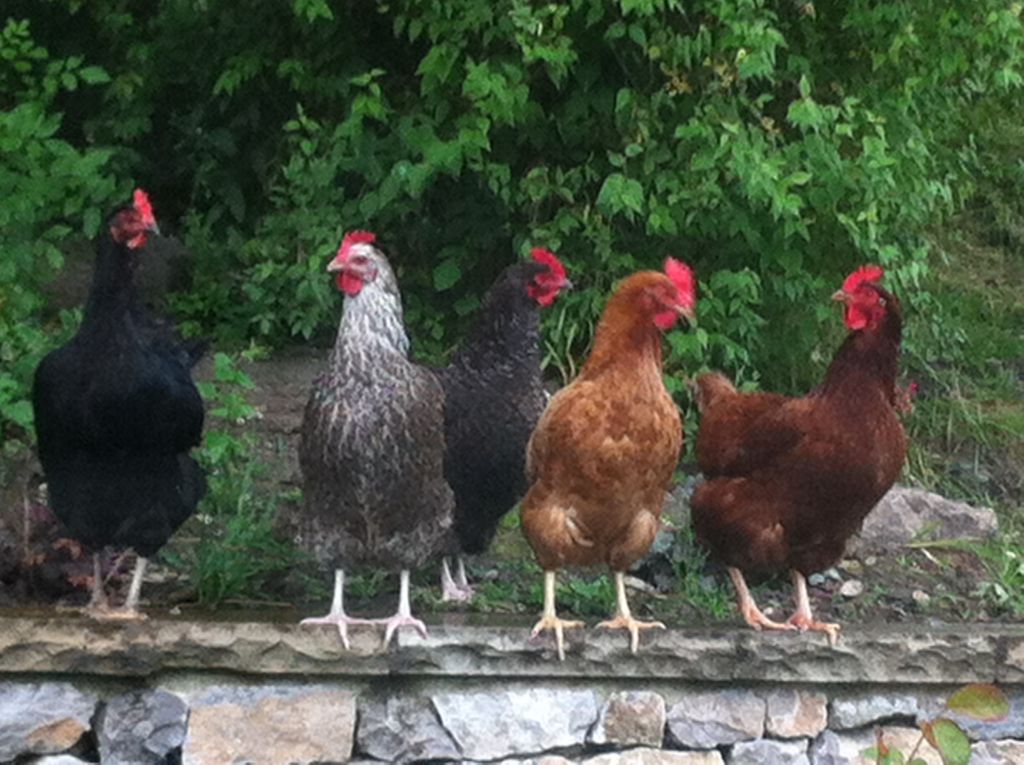
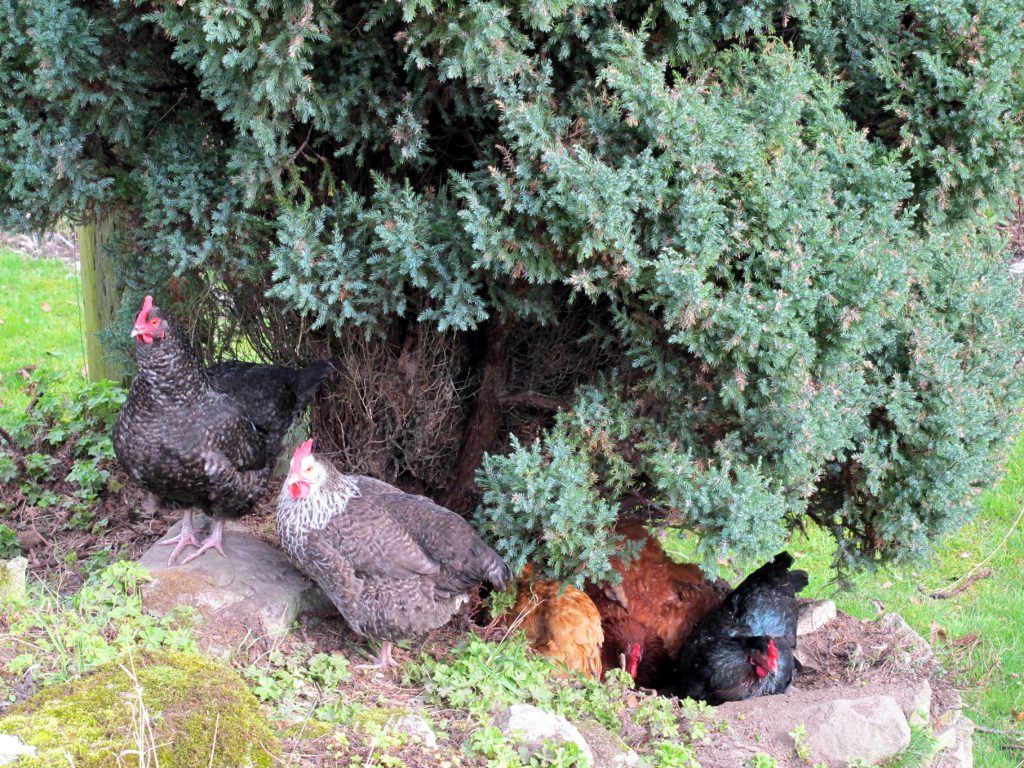
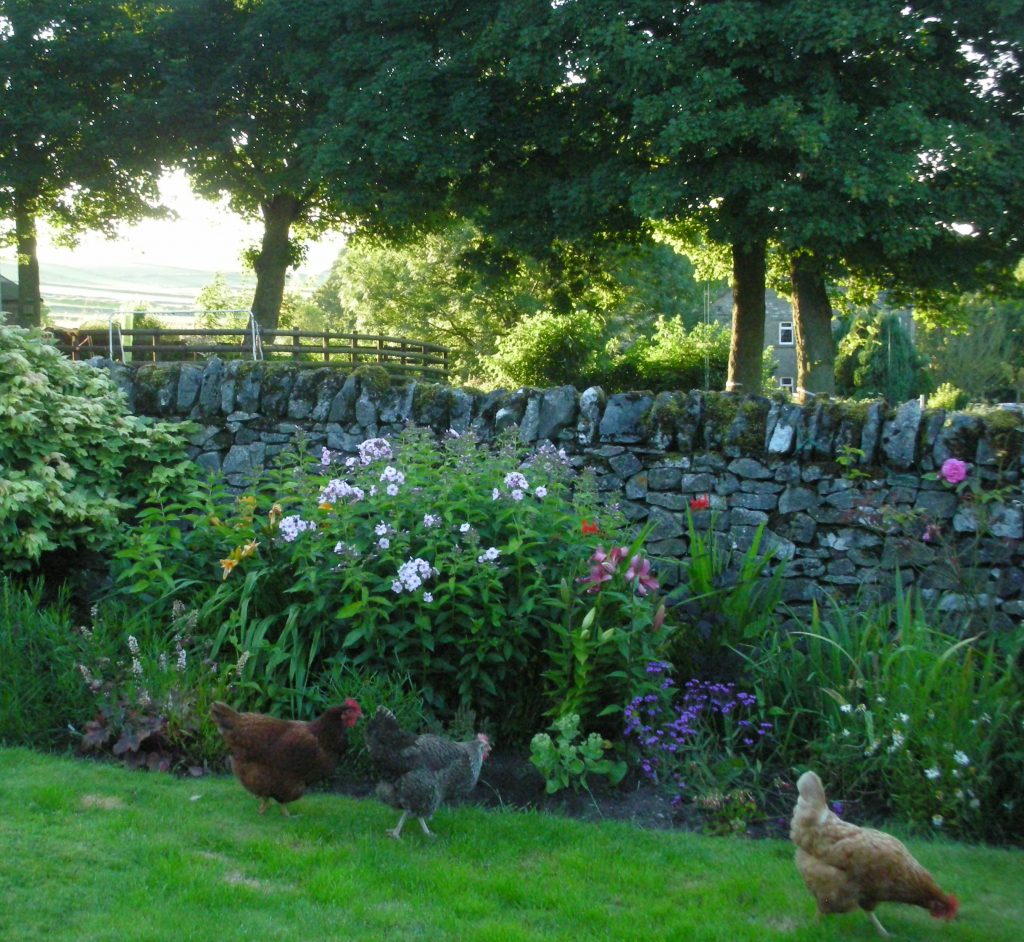
We allowed “the girls” free range of the garden and thoroughly enjoyed their constant company but, in due course, they took their toll on the plants and we decided to build them a large foraging area in the field. However, due to planning regulations, we are not allowed to construct a chicken shed on the field, so I came up with the idea of having a large chicken run in the field, with a hen house and coop in the garden, close to the wall, constructing a tunnel through the wall for access to the field. The first step was to create a level area on which to site the hen house; because of the underlying rock structure, this required digging into the bank at one side and raising the level at the other. As we were never short of small stone, it made sense to make up some gabions rather than use building blocks and mortar. I first had to do battle with tree roots and lumps of rock in order to create a level foundation for the gabions. It was then a relatively simple matter to dig out the bank and back-fill to create a level platform.
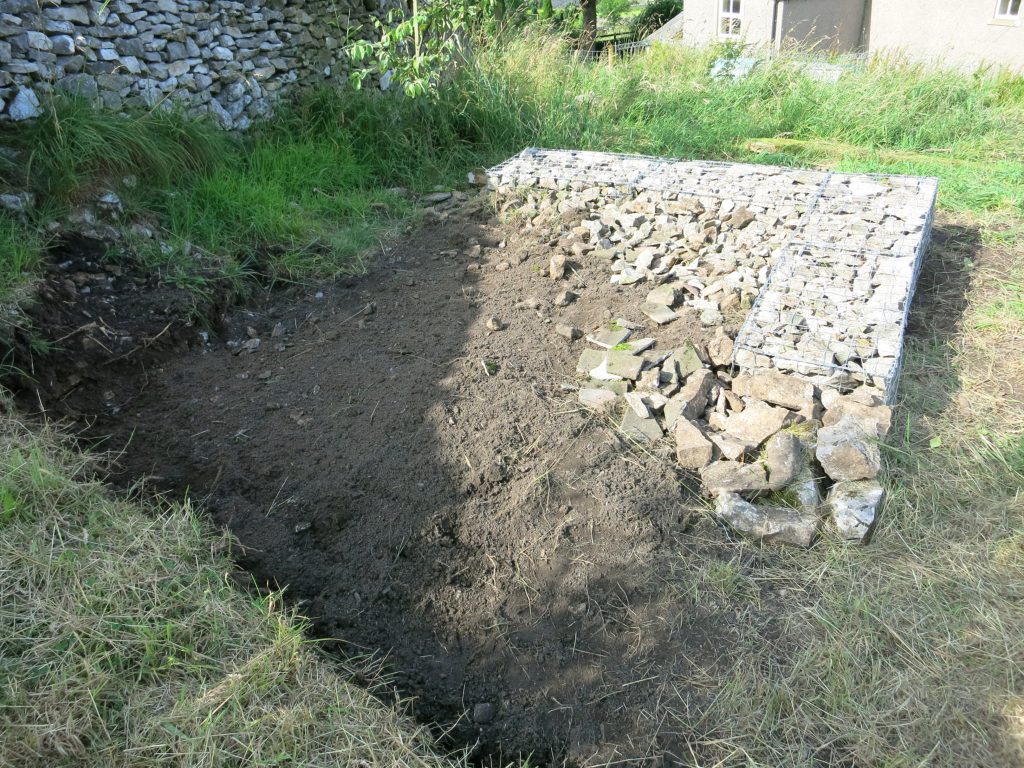
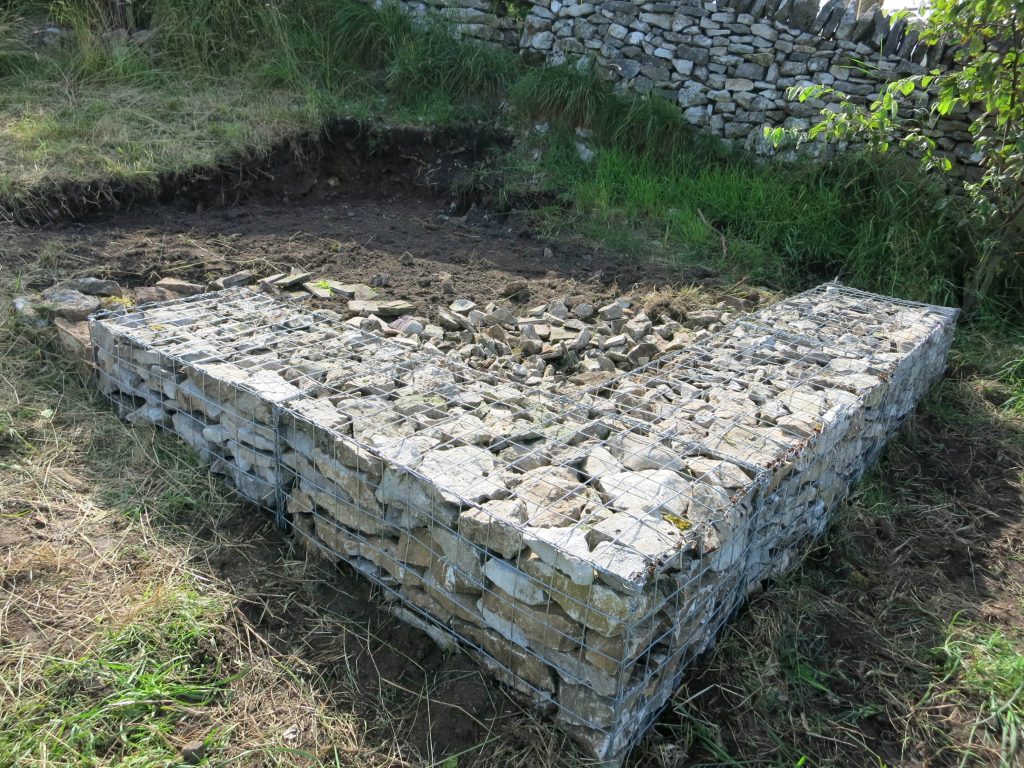
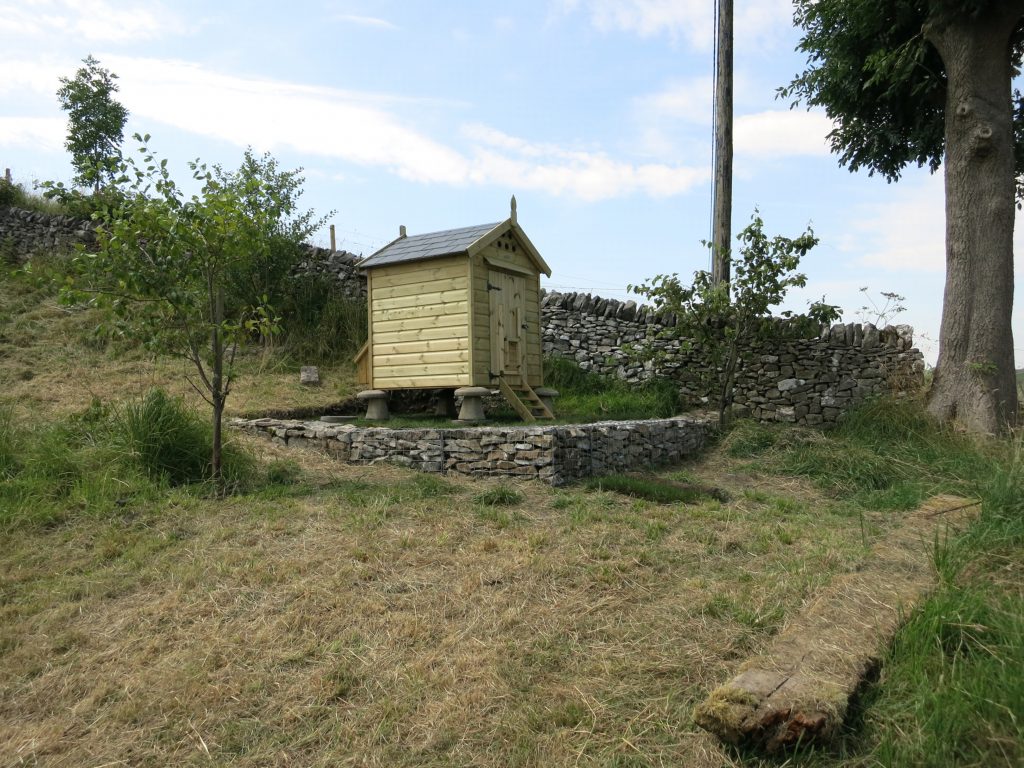
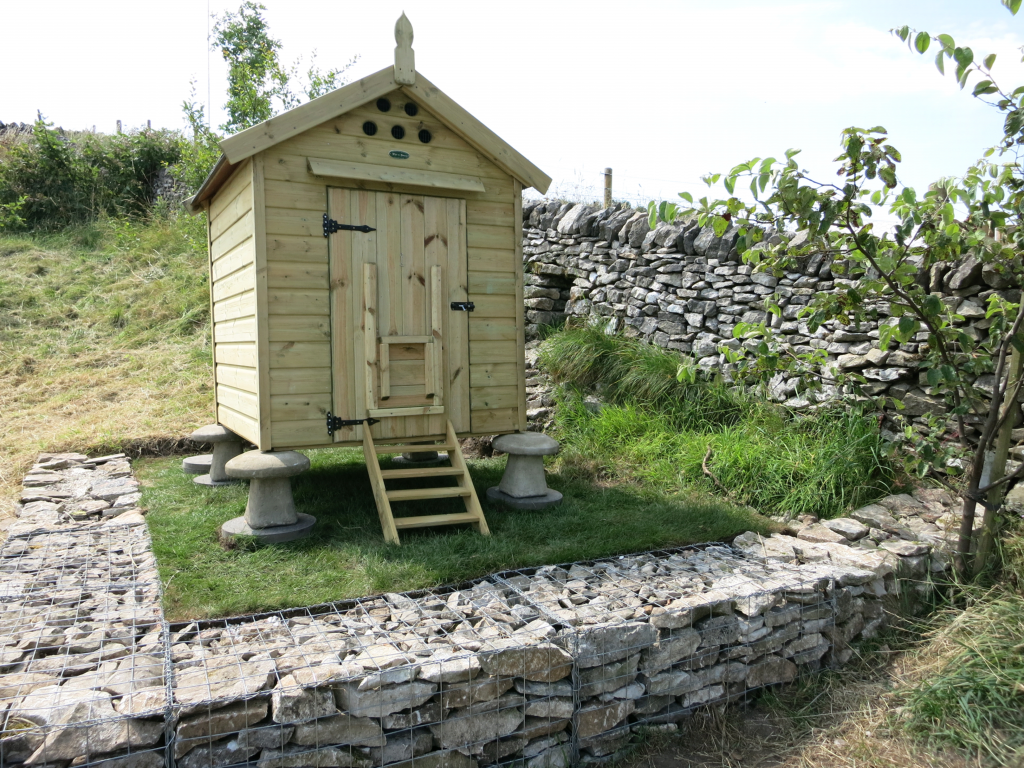
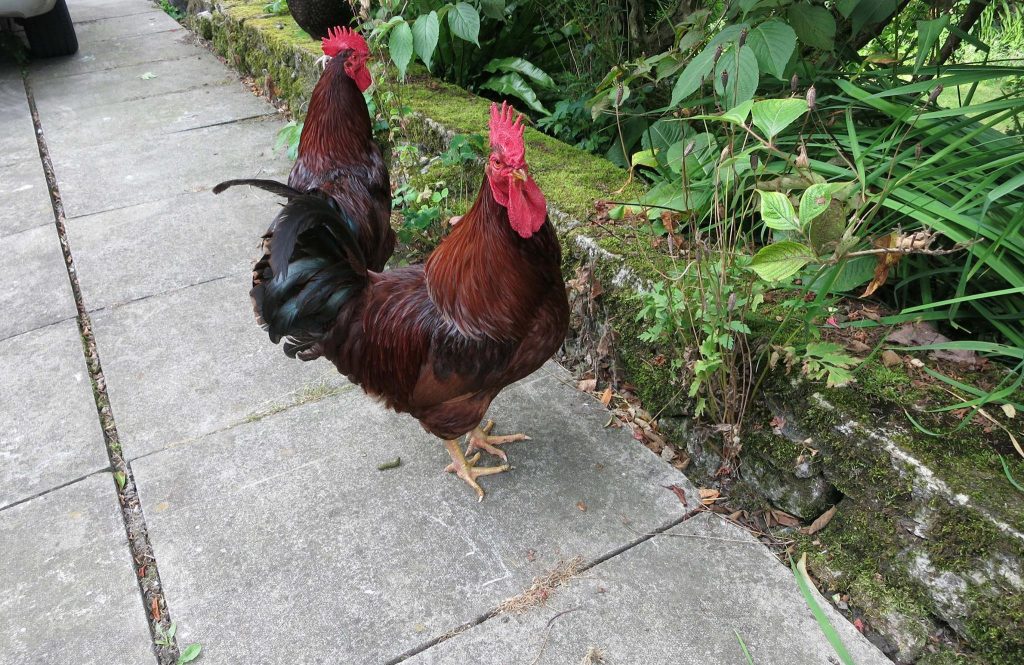
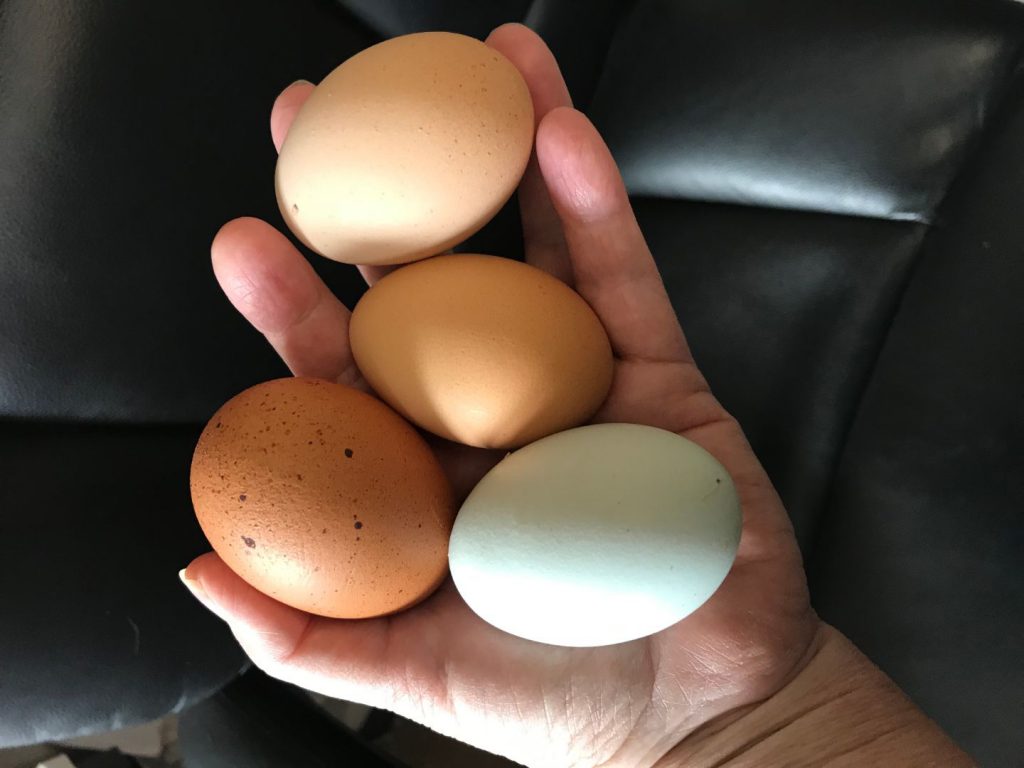
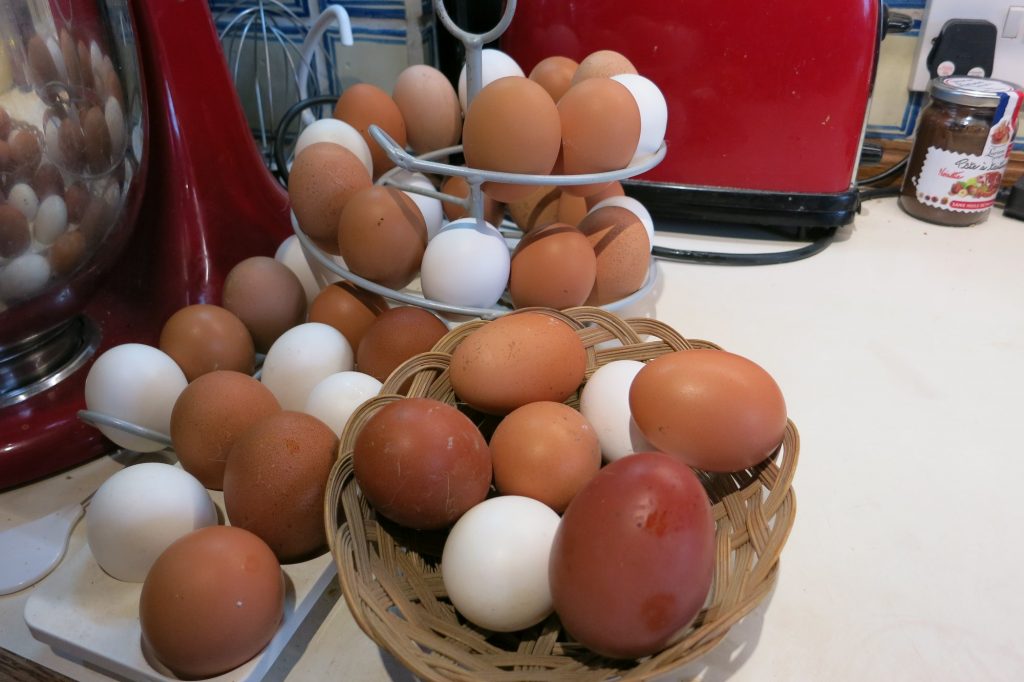
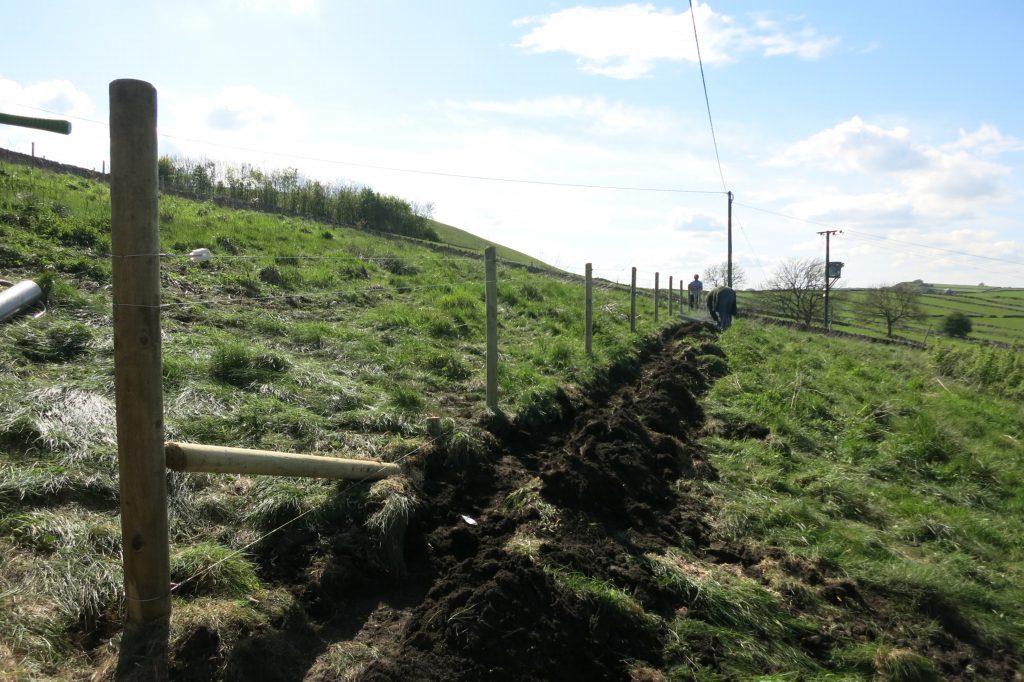
Whilst we had the workmen on site, it made sense to get them to scrape another level row and erect posts and wires to support a nice long row of Raspberry canes running parallel to this chicken fence.
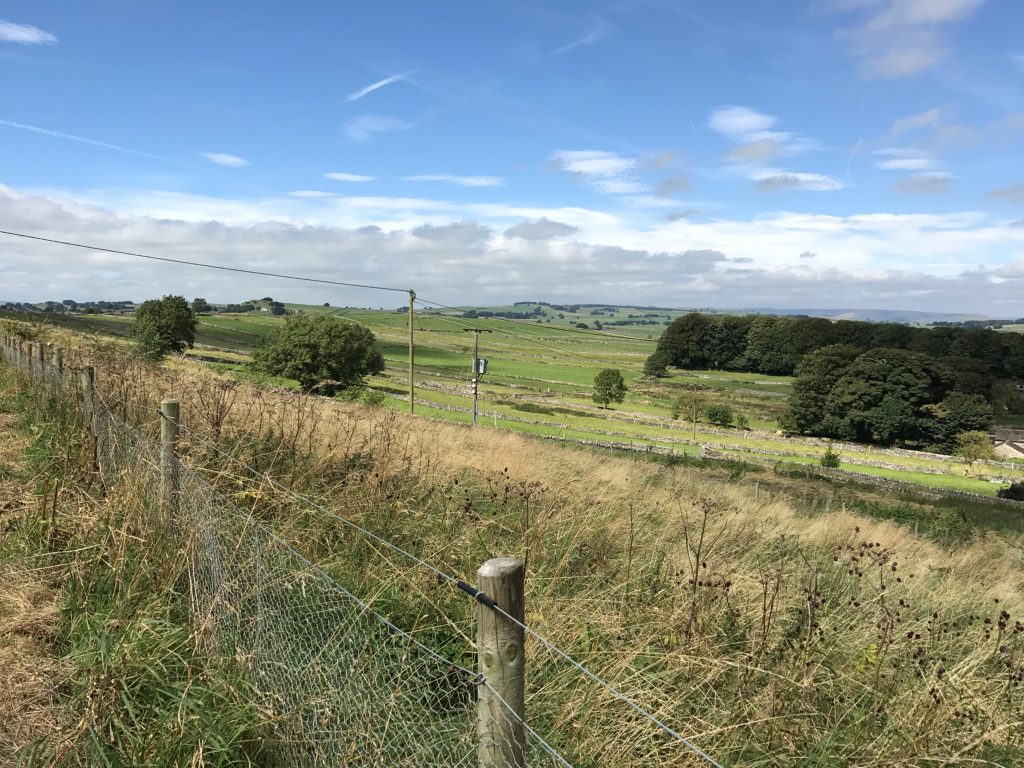
The view from the top of the field
The area to the right of the fence is the large chicken run which takes up the central area; the field had been used for grazing store-cattle for a great many years but had lain idle for at least six years. The grass is thick and full of tussocks; there are lots of Sow Thistles, Wild Carrot, Sweet Cicely and Burnett as well as Buttercups and Vetch, but “Wild Flower Meadow “ it is not. The chickens enjoy tunneling through the undergrowth and have made some impressive scrapes for dust-bathing.
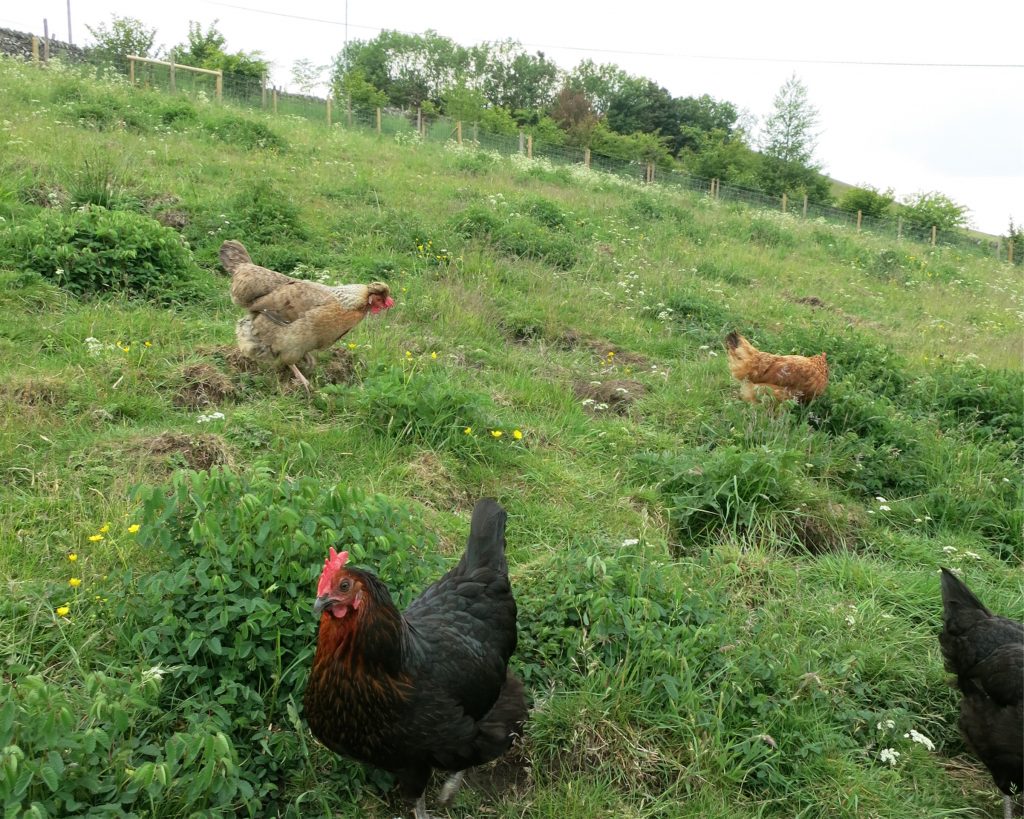
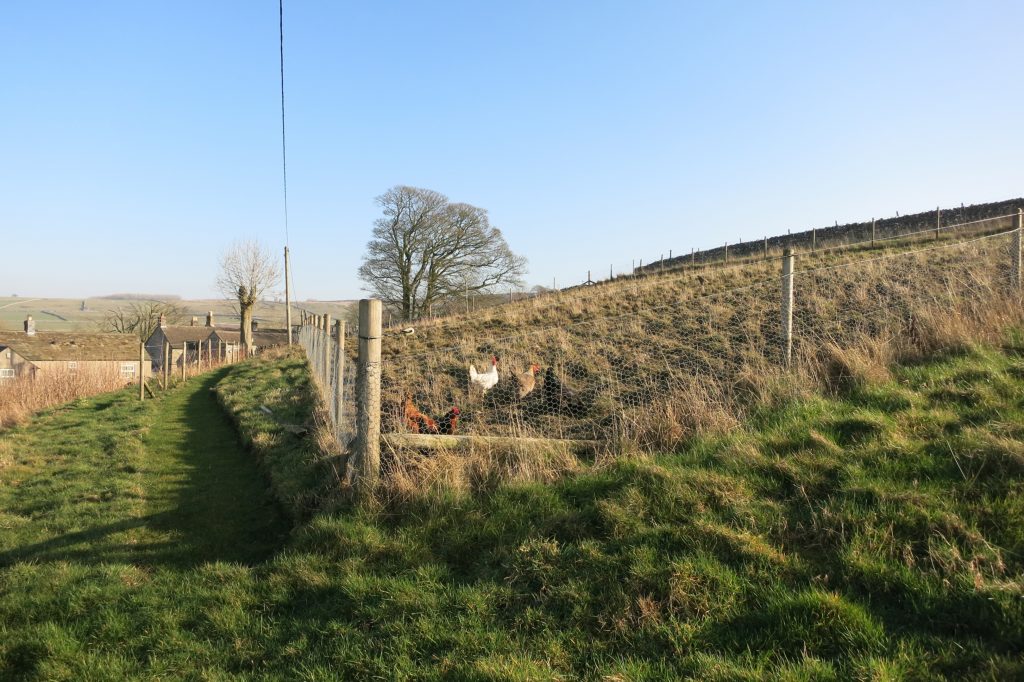
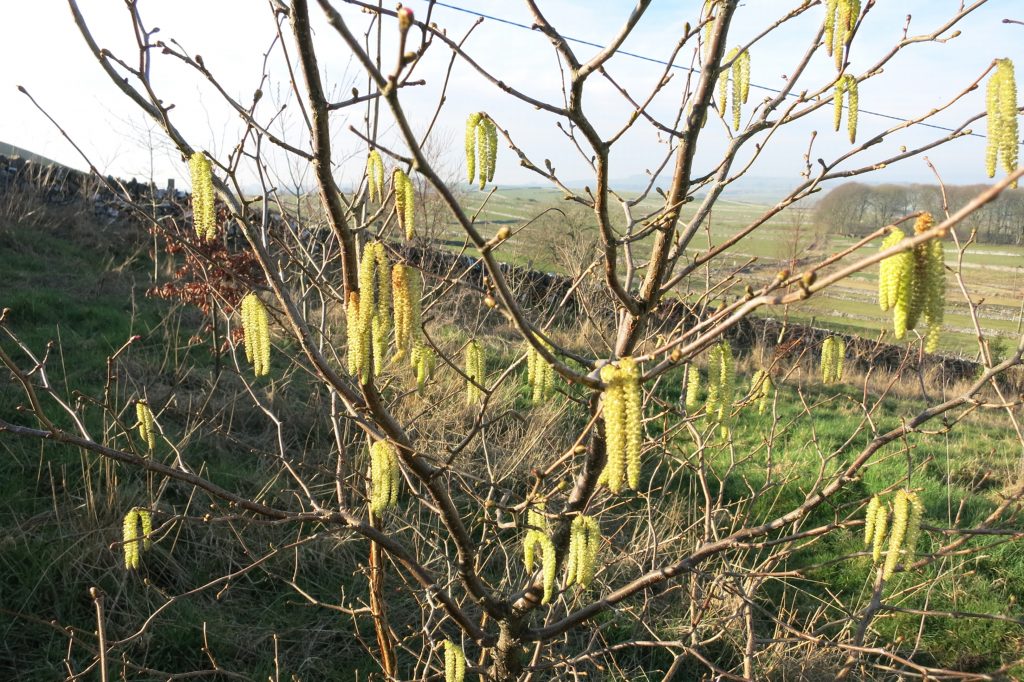
To provide a degree of shelter from the prevailing westerly winds, we planted an assortment of native hedgerow trees along the upper boundary walls. Purchased as whips, these include Hazel, Willow, Birch, Hawthorn, Holly, Elm, Oak, Beech, Rowan, Field Maple, Elder, Blackthorn, Guelder Rose, Dog Rose, Crab Apple & Cherry Plum.
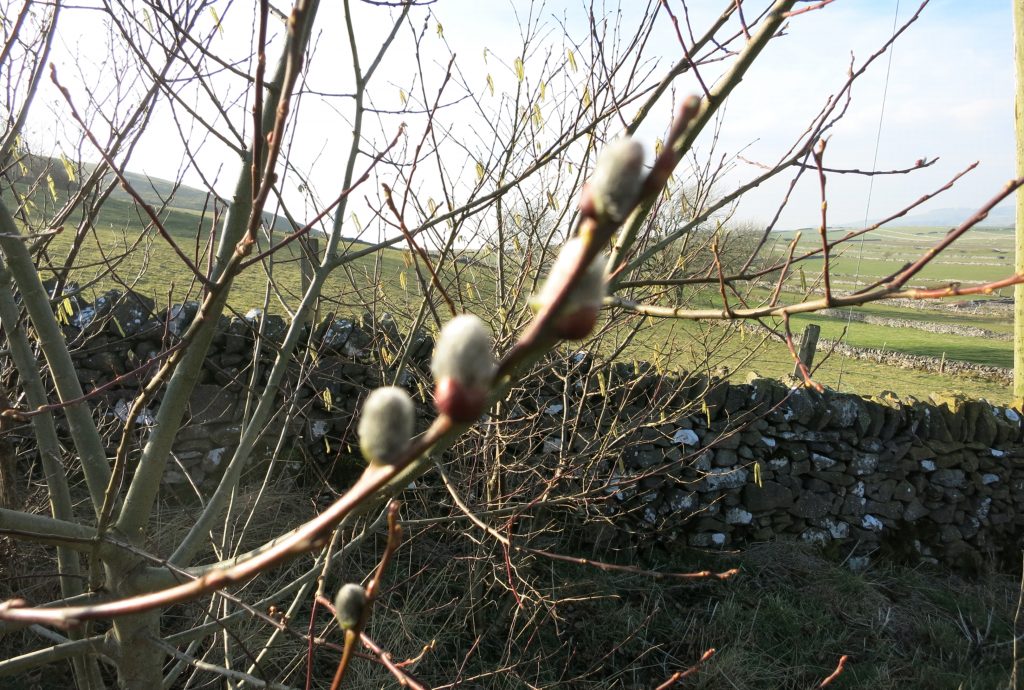
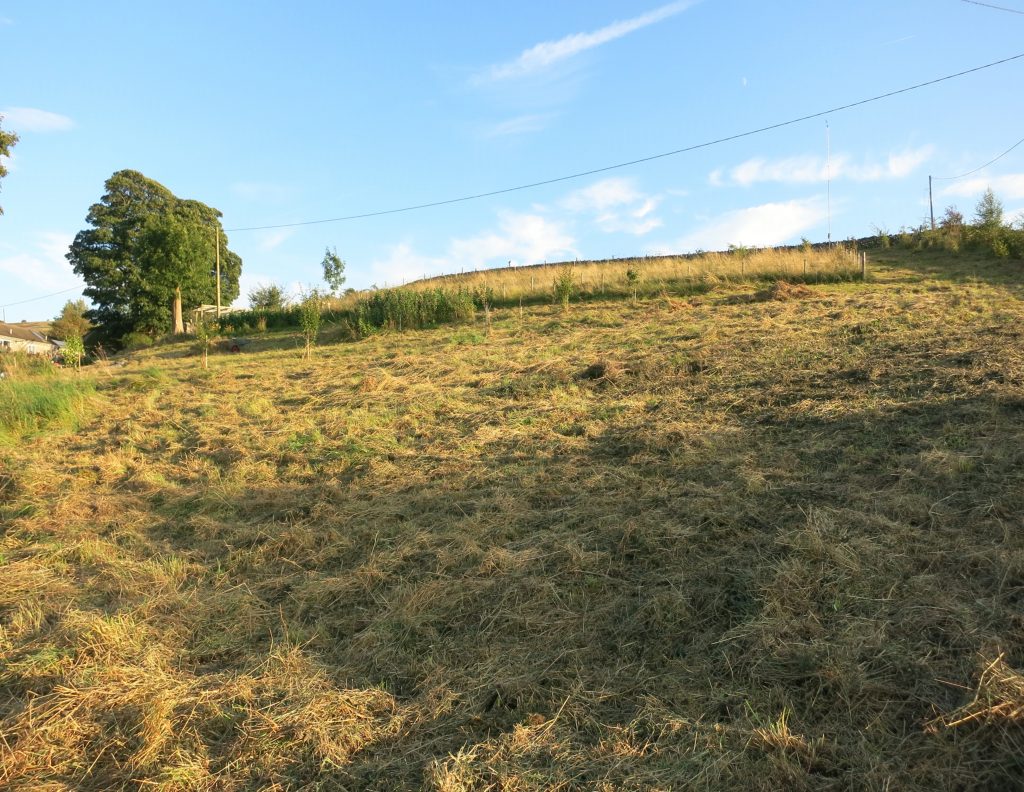
It is difficult to control such a large area of grassy hillside that has been left un-grazed for many years. Despite investing in a power-scythe, the combination of steep gradient and uneven ground makes mowing impossible so we’re going to have to invest in a couple of sheep.
Continued on page 8 Sheep
.